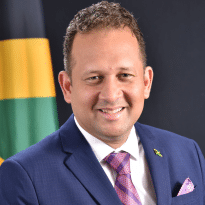Using Ethnic Media More Effectively Will Increase Accuracy In Census Count
WASHINGTON – The US Census Bureau is missing opportunities to provide reporting instructions to diverse communities in the United States by failing to fully utilize the ethnic media that can reach more than 60 million adults in those communities, according to testimony from New America Media (NAM) in Congress today.
Sandy Close, NAM’s executive director, called the 2010 Census advertising program an “unprecedented investment” in ethnic and community media, having identified 3,000 media outlets across the country. But she cautioned that many key media outlets were left out, including 47% of those that attended roundtable sessions organized by NAM and the Census Bureau last year to learn how they could help with the count. She noted that several prominent African American papers had been excluded.
“Many are frustrated — they don’t know why they fell through the cracks. Some are bitter. All very urgently want a role — even if small — and believe, as I do, that together they can move the needle those extra percentage points,” said Ms. Close, testifying before the Oversight and Government Reform’s Subcommittee on Information Policy, Census and National Archives. Her organization represents more than 2,500 ethnic media outlets across the country.
The roundtable discussions organized last year included more than 600 ethnic media representatives in 12 cities from coast to coast. The ethnic media participating included media giants like Univision, Asian language dailies, BET and Clear Channel stations to established black and Spanish language weeklies, upstart radio and TV stations, as well as niche print and online outlets serving Burmese, Ethiopian, Arab, Russian, Mixtec, Punjabi and Samoan communities.
“Their hunger to participate in the 2010 Campaign is intense — you could cut the exuberance at these gatherings with a knife,” Ms. Close testified. “For many media, it was the first time they’d come together as a media sector in the same city. They get the Census: they get their community’s stake in a complete count, and they get their own.”
In citing the importance of an accurate Census count not only on federal dollars, but private ones as well, she noted the experience of Juan Carlos Ramos of the El Tiempo Hispanic newspaper in New Orleans. Mr. Ramos said the 2000 Census undercounted Hispanics in New Orleans and as a result Coca Cola dropped New Orleans, and his paper, from their national ad campaign.
Many ethnic media outlets are frustrated by being excluded from the Census advertising.
“From our first briefing in March of 09 until our last one in early December, ethnic media attendees also expressed a uniform anxiety over the lack of transparency in the decision making process of the Census ad buy,” Ms. Close said, adding that she has received correspondence from ethnic media outlets across the country not been utilized.
Moreover, there was also criticism that some of the communications vehicles chosen by the Census Bureau are not having the desired impact. She quoted Joe Orozco, of Hoopa Radio in northern California, lamenting that the Census spent the “the biggest chunk of money to reach American Indians” on billboards that don’t have much of an impact on isolated reservations like his. “Most of us don’t do a lot of freeway driving,” she quoted Mr. Orozco as saying.
Ms. Close said that hundreds of ethnic media like Hoopa Radio want to inform and mobilize their communities to participate in the Census. As the Census Bureau recognizes the regions with the lowest response rates, she recommended that the government fund a program similar to a NAM project launched to reach American Indian and indigenous communities in California.
The Save our Services campaign for Census 2010 replicates an approach that NAM has pioneered through numerous social marketing campaigns over the last decade. It relies upon local ethnic media outlets to design their own messaging campaigns and earned media components. Under this program, Hoopa Radio received a small grant of $2,000 that will help pay to develop a PSA that will grab listeners’ attention with a message that says: “If we don’t let ourselves be counted, they’ll say no one lives here and take away our water rights.”
Ms. Close cited reasons why the Census Bureau should utilize the ethnic media more. She noted that a survey by San Francisco State’s Renaissance Center last year found that 68 percent of ethnic media leaders described their primary goal as service to the community, with less than a third listing making a profit as their goal. In addition, she said that while mainstream media audiences have sharply declined, there has been a 16 percent growth in the ethnic media audiences over the last five years.
“Even a modest investment of $2 million in those outlets that have been left out or, like Joe Orozco, believe they have more effective ways to get the message to their audiences could increase the response rate dramatically in some regions between the crucial period between April 15 and the end of July,” Ms. Close said. “More important, it would acknowledge that not just the primary ethnic news outlets but the entire ethnic media sector has an indispensable role to play in how government communicates with the governed.”

